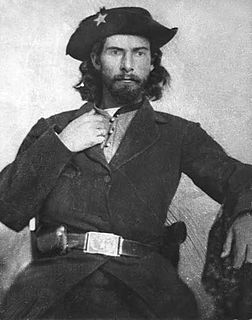 W
WWilliam T. Anderson, known by the nickname "Bloody Bill" Anderson, was one of the deadliest and most notorious Confederate guerrilla leaders in the American Civil War. Anderson led a band of volunteer partisan raiders who targeted Union loyalists and federal soldiers in the states of Missouri and Kansas.
 W
WJoseph Bailey was a civil engineer who served as a general in the Union Army during the American Civil War.
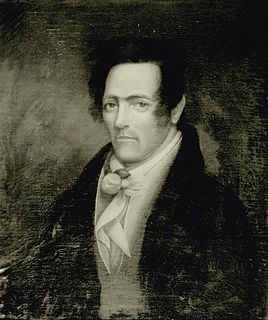 W
WJoshua Barton was the first Missouri Secretary of State. He was involved in three duels with prominent Missouri politicians before being killed in a duel.
 W
WJovan Henry Allen Belcher was an American football linebacker who played for the Kansas City Chiefs of the National Football League (NFL). He grew up in West Babylon, New York and was a standout high school athlete before attending and graduating from the University of Maine, where he played for the Maine Black Bears football team. Belcher was named an All-American twice in college after switching in his junior year from linebacker to defensive end.
 W
WThomas Biddle was an American military hero during the War of 1812. Biddle is better known though for having been killed in a duel with Missouri Congressman Spencer Pettis.
 W
WOn August 9, 2014, Michael Brown Jr., an 18-year-old black man, was fatally shot by 28-year-old white Ferguson police officer Darren Wilson in the city of Ferguson, Missouri, a suburb of St. Louis. Brown was accompanied by his 22-year-old friend Dorian Johnson. Wilson said that an altercation ensued when Brown attacked Wilson in his police vehicle for control of Wilson's gun until it was fired. Johnson said that Wilson initiated a confrontation by grabbing Brown by the neck through his car window, threatening him and then shooting at him. At this point, both Wilson and Johnson state that Brown and Johnson fled, with Wilson pursuing Brown shortly thereafter. Wilson stated that Brown stopped and charged him after a short pursuit. Johnson contradicted this account, stating that Brown turned around with his hands raised after Wilson shot at his back. According to Johnson, Wilson then shot Brown multiple times until Brown fell to the ground. In the entire altercation, Wilson fired a total of twelve bullets, including twice during the struggle in the car; the last was probably the fatal shot. Brown was struck six times, all in the front of his body.
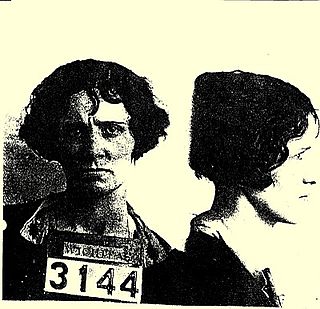 W
WVivian Davis Chase was a Midwestern gangster of the 1920s and 1930s.
 W
WArchie Clement, also known as "Little Arch" or "Little Archie", was an American pro-Confederate guerrilla leader during the American Civil War, known for his brutality towards Union soldiers and pro-Union civilians in the state of Missouri.
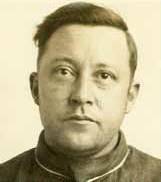 W
WWilliam P. "Dint" Colbeck was a St. Louis politician and organized crime figure involved in bootlegging and illegal gambling. He succeeded William Egan as head of the Egan's Rats bootlegging gang in the early 1920s.
 W
WRoy Daugherty, also known as Arkansas Tom Jones, was an American outlaw of the Old West, and a member of the Wild Bunch gang, led by Bill Doolin. He was the longest-lived, as well as the last surviving member of the gang.
 W
WThe Ferguson unrest in Ferguson, Missouri, involved protests and riots beginning on August 10, 2014, the day after the fatal shooting of Michael Brown by police officer Darren Wilson. The unrest sparked a vigorous debate in the United States about the relationship between law enforcement officers and African Americans, the militarization of police, and the use-of-force law in Missouri and nationwide. Continued activism expanded the issues to include modern-day debtors prisons, for-profit policing, and school segregation.
 W
WThe Haun’s Mill Massacre occurred on October 30, 1838, when a mob/militia unit from Livingston County, Missouri, attacked a Mormon settlement in eastern Caldwell County, Missouri, after the Battle of Crooked River. By far the bloodiest event in the 1838 Mormon War in Missouri, it has long been remembered by the members of the Latter Day Saint movement. While the spelling "Haun" is common when referring to the massacre or the mill where it occurred; the mill's owner used the spelling "Hawn" in legal documents.
 W
WJames Hendricks and Kimberlin Mills are American murder victims who were discovered on June 17, 1978. The pair were believed to have been seen together at a truck stop in Missouri, which is where the murders are presumed to have taken place. Hendricks was left at the crime scene while Mills was found in Mississippi County, Arkansas.
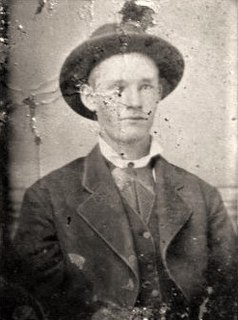 W
WRobert Woodson "Wood" Hite was an outlaw and cousin of Frank and Jesse James. He was a member of the James-Younger gang, participating in a number of robberies and other crimes. He was shot dead by Robert Ford during a gunfight with Ford's friend Dick Liddil. The death of Hite precipitated the series of events that culminated in the killing of Jesse James by Ford.
 W
WJesse Woodson James was an American outlaw, bank and train robber, guerrilla, and leader of the James–Younger Gang. Raised in the "Little Dixie" area of western Missouri, James and his family maintained strong Southern sympathies. He and his brother Frank James joined pro-Confederate guerrillas known as "bushwhackers" operating in Missouri and Kansas during the American Civil War. As followers of William Quantrill and "Bloody Bill" Anderson, they were accused of committing atrocities against Union soldiers and civilian abolitionists, including the Centralia Massacre in 1864.
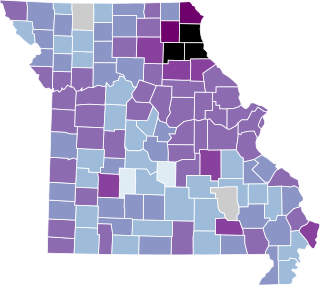 W
WThe COVID-19 pandemic was confirmed to have reached the U.S. state of Missouri in March 2020. A university student who had recently been to Italy, was the first index case for COVID-19 in Missouri. She was treated at Mercy Hospital St. Louis. As of February 8, 2021, the Missouri Department of Health and Senior Services has confirmed 502,432 cumulative cases and 7,562 deaths.
 W
WStanisław Kiecal, better known in the boxing world as Stanley Ketchel, was an American professional boxer who became one of the greatest World Middleweight Champions in history. He was nicknamed "The Michigan Assassin." He was murdered at a ranch in Conway, Missouri, at the age of 24.
 W
WThe I-70 killer is an unidentified American serial killer who is known to have killed six store clerks in the Midwest in the spring of 1992. His nickname derives from the fact that several of the stores in which his victims worked were located a few miles off of Interstate 70 (I-70).
 W
WOn February 7, 2008, a gunman went on a shooting rampage at a public meeting in the city hall, leaving six people dead and one injured in Kirkwood, Missouri, a suburb of St. Louis, Missouri in St. Louis County. Charles Lee "Cookie" Thornton, shot one police officer with a revolver across the side street from city hall and took the officer's handgun before entering city hall. Thornton reached council chambers with these two pistols shortly after the meeting began. There, he shot a police officer, the public works director, two council members, the mayor, and a reporter. In total, the gunman killed five and wounded two others; one of the two wounded victims, the mayor, later died. Thornton died from two gunshot wounds in a shootout.
 W
WAndre Louis Hicks, known by his stage name Mac Dre, was an American rapper, hip hop pioneer, and record producer based in Vallejo, California. He was an instrumental figure in the emergence of hyphy, a cultural movement in the Bay Area hip hop scene that emerged in the early 2000s. Hicks is considered one of the movement's key pioneers that fueled its popularity into mainstream, releasing songs with fast-paced rhymes and basslines that inspired a new style of dance. As the founder of the independent record label Thizz Entertainment, Hicks recorded dozens of albums and gave aspiring rappers an outlet to release albums locally.
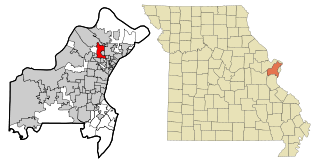 W
WThe shooting of Antonio Martin occurred on December 23, 2014, in Berkeley, Missouri, a suburb of St. Louis. Martin, an 18-year-old black male, was fatally shot by a white Berkeley police officer when Martin pulled a gun on him. The shooting sparked protests in the St. Louis area and other cities in the U.S. The shooting elicited comparison to the earlier shooting death of Michael Brown two miles away in Ferguson, Missouri.
 W
WFrisby Henderson McCullough was a Confederate States Army soldier in the American Civil War, executed on the orders of Union Colonel John McNeil after the Battle of Kirksville.
 W
WKen Rex McElroy was a resident of Skidmore, Missouri, United States. Known as "the town bully", McElroy's unsolved killing became the focus of international attention. Over the course of his life, McElroy was accused of dozens of felonies, including assault, child molestation, statutory rape, arson, animal cruelty, hog and cattle rustling, and burglary.
 W
WEdward T. Miller was a Missouri born outlaw.
 W
WDonald Lee O'Riley was a Major League Baseball pitcher who played for two seasons. He pitched in 18 games for the Kansas City Royals during the inaugural 1969 season and nine games during the 1970 season.
 W
WHailey Owens was a 10-year-old girl from Springfield, Missouri, who was abducted, sexually assaulted and murdered by then-45-year-old Craig Wood on February 18, 2014. The killing caught attention nationally and was discussed on Nancy Grace. Thousands of people attended a candlelight vigil for Hailey on February 23, 2014. A neighborhood park was later dedicated to her called Hailey's Playground. Her family and friends also advocated for improvements to the state's AMBER Alert system, ultimately leading to the 2019 passage of HAILEY'S Law, which empowers law enforcement officers to issue alerts more quickly.
 W
WRobert Vinkler Richardson was a brigadier general in the Confederate States Army during the American Civil War.
 W
WAlonzo William Slayback (1838-1882), a lawyer, was an officer in the Confederate Army and a founder of the Veiled Prophet parade and celebration in St. Louis, Missouri. He was shot and killed by the managing editor of the St. Louis Post-Dispatch.
 W
WDavis Kasey Tutt was an American Old West gambler and former soldier, best remembered for being killed during the Wild Bill Hickok – Davis Tutt shootout of 1865, which launched Wild Bill Hickok to fame as a gunfighter.
 W
WOf the thousands of people murdered every year in the United States, several remain unidentified. Many of these individuals remain unidentified for years or even decades after their deaths. These cases include that of Tammy Jo Alexander, who was murdered in 1979 and remained an unidentified decedent until 2015, Reet Jurvetson, who was murdered in 1969 and whose body remained unidentified for 46 years, and Alisha Heinrich, a toddler thrown alive from the Interstate 10 bridge in 1982 and identified via genetic genealogy in 2020.
 W
WHenry Washington Younger was a businessman and father to the Younger outlaws Cole, Jim, John and Bob. He was the father of fourteen children. He was the son of Colonel Charles Lee Younger and Sarah Sullivan Purcell and married Bersheba Leighton Fristoe in about 1830.